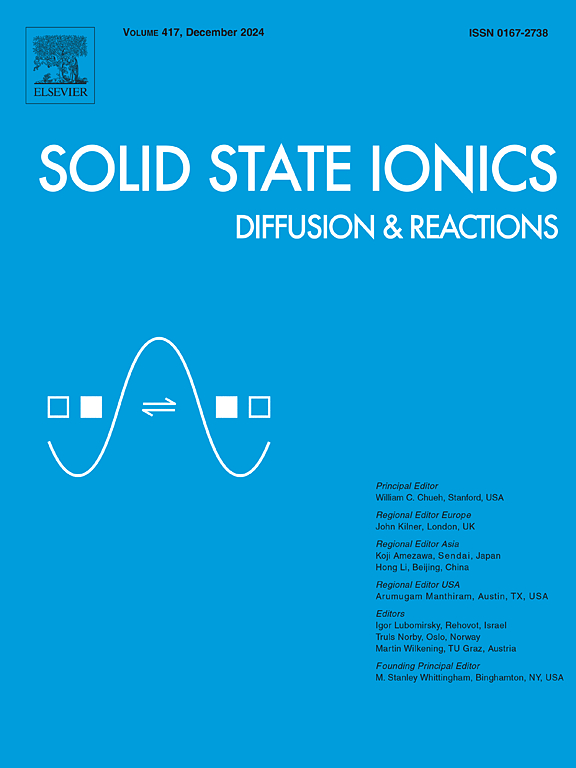Preparation of MoS2/fungus carbon composite and its lithium-ions storage performance
IF 3
4区 材料科学
Q3 CHEMISTRY, PHYSICAL
引用次数: 0
Abstract
MoS2 exhibits a large layer spacing and weak van der Waals forces between its layers, which facilitate the diffusion of lithium ions. As a typical embedded and de-embedded lithium-ions batteries (LIBs) anode material, MoS2 boasts a high theoretical specific capacity, but its undergoes significant structural changes during repeated charging and discharging cycles, leading to rapid capacity degradation. In this study, MoS2/fungus carbon (FC) composites with multilayer graded structures were prepared using biomass fungus. The fungus polysaccharide solution provides amorphous carbon to mantain the layer spacing of MoS2 during the hydrothermal process. As a result, the discharge capacity of MoS2/FC composites reached up to 1067.5 mA h g−1 and 728.6 mA h g−1 at current density of 0.2 A g−1 and 2.0 A g−1, respectively. More importantly, the composites demonstrates excellent long-term performance due to its unique multilayer graded N-doped carbon structure.
二硫化钼/真菌碳复合材料的制备及其锂离子存储性能
二硫化钼层间距大,层间范德华力弱,有利于锂离子的扩散。MoS2作为典型的嵌入式和去嵌入式锂离子电池(LIBs)负极材料,具有较高的理论比容量,但在反复充放电循环过程中,其结构会发生显著变化,导致容量退化迅速。本研究以生物质真菌为原料,制备了多层梯度结构的MoS2/真菌碳(FC)复合材料。真菌多糖溶液在水热过程中提供无定形碳以维持MoS2的层间距。结果表明,MoS2/FC复合材料在0.2 a g−1和2.0 a g−1电流密度下的放电容量分别达到1067.5 mA h g−1和728.6 mA h g−1。更重要的是,由于其独特的多层渐变n掺杂碳结构,复合材料表现出优异的长期性能。
本文章由计算机程序翻译,如有差异,请以英文原文为准。
求助全文
约1分钟内获得全文
求助全文
来源期刊

Solid State Ionics
物理-物理:凝聚态物理
CiteScore
6.10
自引率
3.10%
发文量
152
审稿时长
58 days
期刊介绍:
This interdisciplinary journal is devoted to the physics, chemistry and materials science of diffusion, mass transport, and reactivity of solids. The major part of each issue is devoted to articles on:
(i) physics and chemistry of defects in solids;
(ii) reactions in and on solids, e.g. intercalation, corrosion, oxidation, sintering;
(iii) ion transport measurements, mechanisms and theory;
(iv) solid state electrochemistry;
(v) ionically-electronically mixed conducting solids.
Related technological applications are also included, provided their characteristics are interpreted in terms of the basic solid state properties.
Review papers and relevant symposium proceedings are welcome.
 求助内容:
求助内容: 应助结果提醒方式:
应助结果提醒方式:


